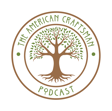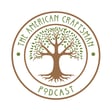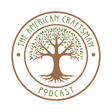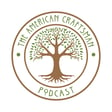
The American Craftsman Podcast Ep. 32 | To Veneer Or Not To Veneer
On Episode 32 of The American Craftsman Podcast, hosted by Greene Street Joinery, we discuss veneer and it's uses.
Beer of the Week (Ross Brewing Co. Meet Me At The Snack Shack): https://untappd.com/b/ross-brewing-company-meet-me-at-the-snack-shack/4229046
Tool of the Week: (ZEROPLAY Miter Bars by Microjig) https://www.amazon.com/gp/product/B008O2KVR8/ref=as_li_tl?ie=UTF8&tag=greenestreetj-20&camp=1789&creative=9325&linkCode=as2&creativeASIN=B008O2KVR8&linkId=df7ed64c193b4ddf896bf85d12d9da1c
Greene Street Joinery is a custom design & build shop located in Monmouth County, New Jersey. We build multigenerational furniture with an eco-friendly and sustainable mindset.
Inspired and guided by the ideals of the Arts and Crafts movement, we believe in the use of traditional craftsmanship and simple, well-proportioned forms; sustainability and ethical practices; and importantly, taking pleasure in our work as craftsmen to create quality pieces of enduring value.
Follow us!
Instagram: https://www.instagram.com/greene_st_joinery Facebook: https://www.facebook.com/greenestreetjoinery
Support us on Patreon!
https://www.patreon.com/Greene_st_joinery
Visit Us at https://www.greenestreetjoinery.com/
And be sure to Subscribe to our channel for more videos like this one!
Support this podcast at — https://redcircle.com/the-american-craftsman-podcast/donations
Advertising Inquiries: https://redcircle.com/brands



